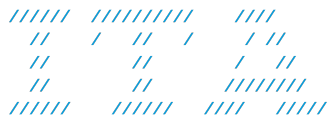A solid knowledge of computational methods is an increasingly important key competence for future architects or urban planners.
In this course students analyze architectural and urban design using current computational methods. Based on these analyses the effects of planning can be simulated and understood. An important focus of this course is the interpretation of the analysis and simulation results and the application of these corresponding methods in early planning phases.
The students learn how the design and planning of cities can be evidence based by using scientific methods. The teaching unit conveys knowledge in state-of-the-art and emerging spatial analysis and simulation methods and equip students with skills in modern software systems. The course consists of lectures, associated exercises, workshops as well as of one integral project work.
In a series of theory lectures we explore how designing and planning of cities could become more evidence based by using scientific methods. Various exercises will provide training for your skills in working with state-of-the-art yet office-proven design tools (Rhino/Grasshopper and add-ons). In an integral project work, you will deepen your knowledge in spatial analysis and simulation methods such as Space Syntax using ConfigUrbanist and Decoding Spaces components packages and environmental analysis with the add-ons LadyBug and HoneyBee. In addition, you will acquire skills for using analysis methods for generative design processes. Therefore we introduce you into the parametric design software Grasshopper for Rhino 3D.
Based on the methods introduced during the semester, you will learn and understand different effects of planning and design interventions on urban life. At the end of the course you will be able to interpret analysis and simulation results, and to apply corresponding computational methods to your own planning projects.
Lecture, HIT F22 – Value Lab
Exercises, HIT H12
Teaching material is provided on moodle.
Supervision:



